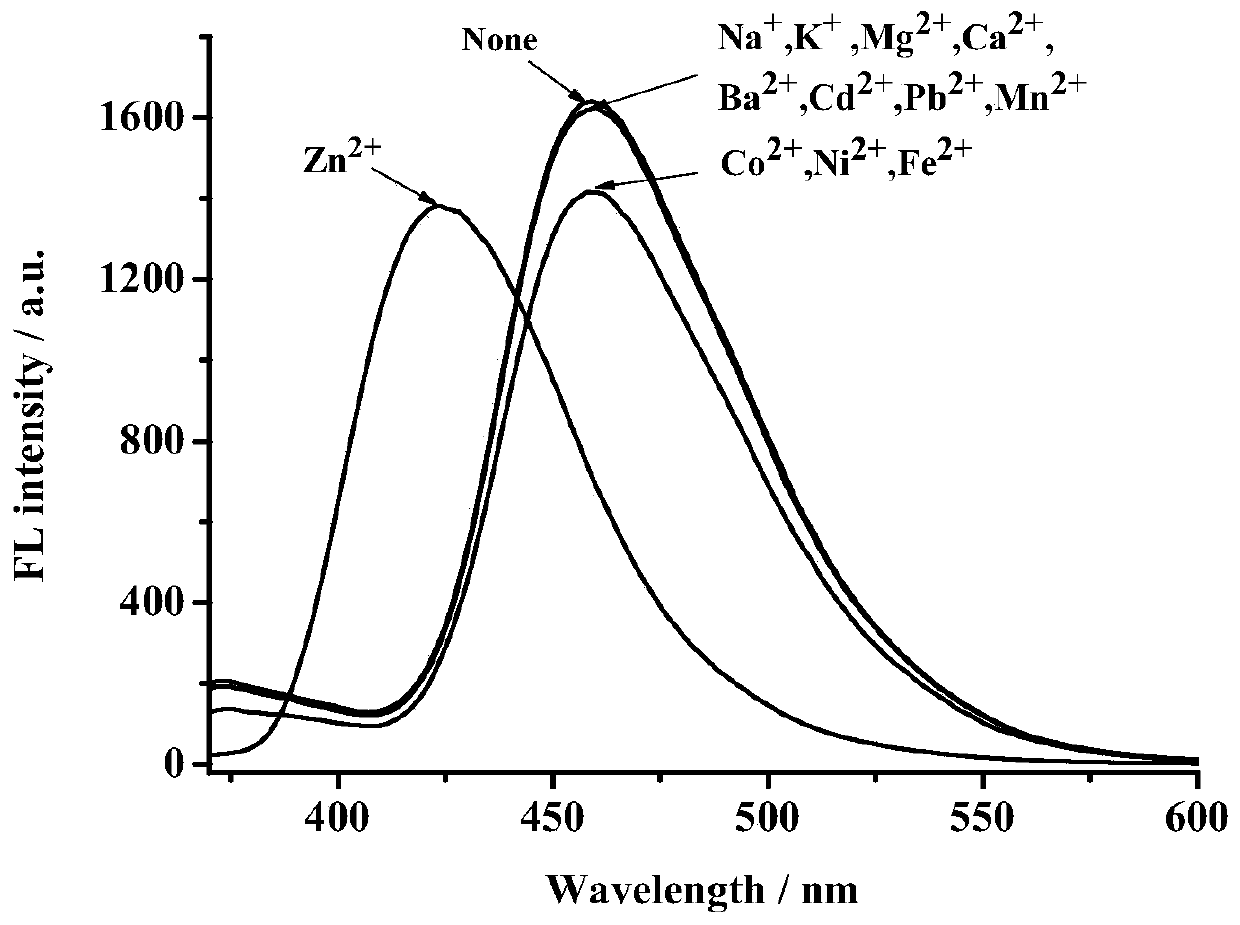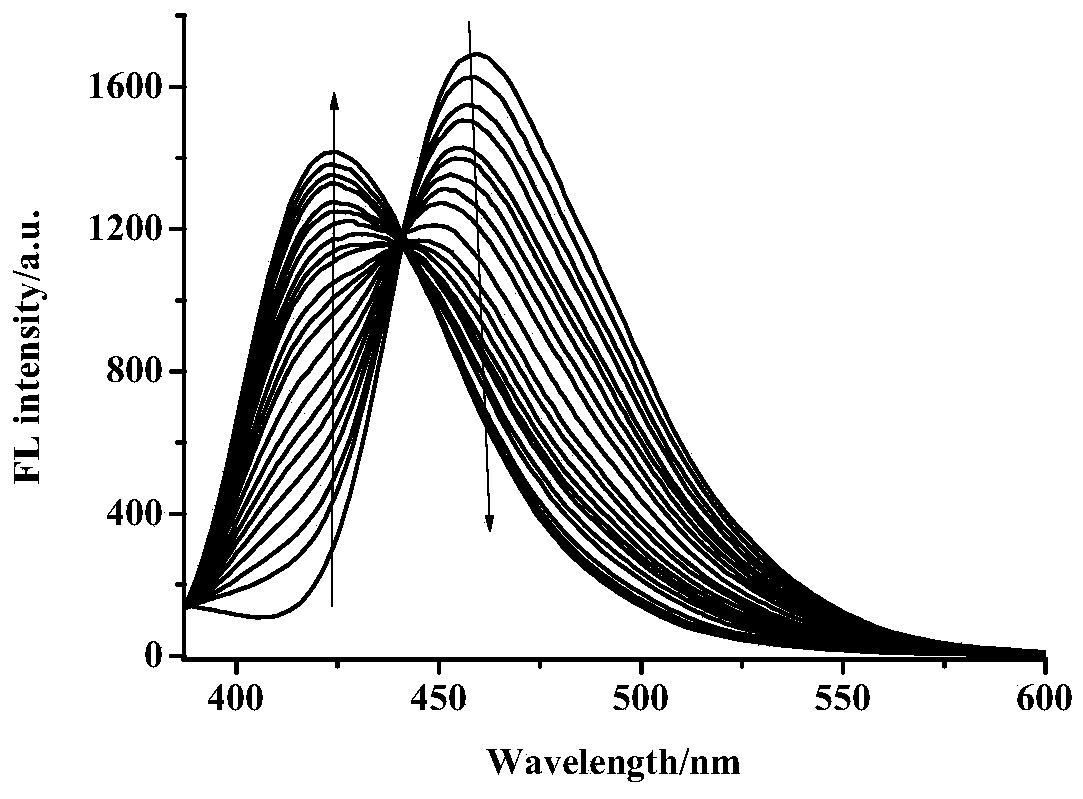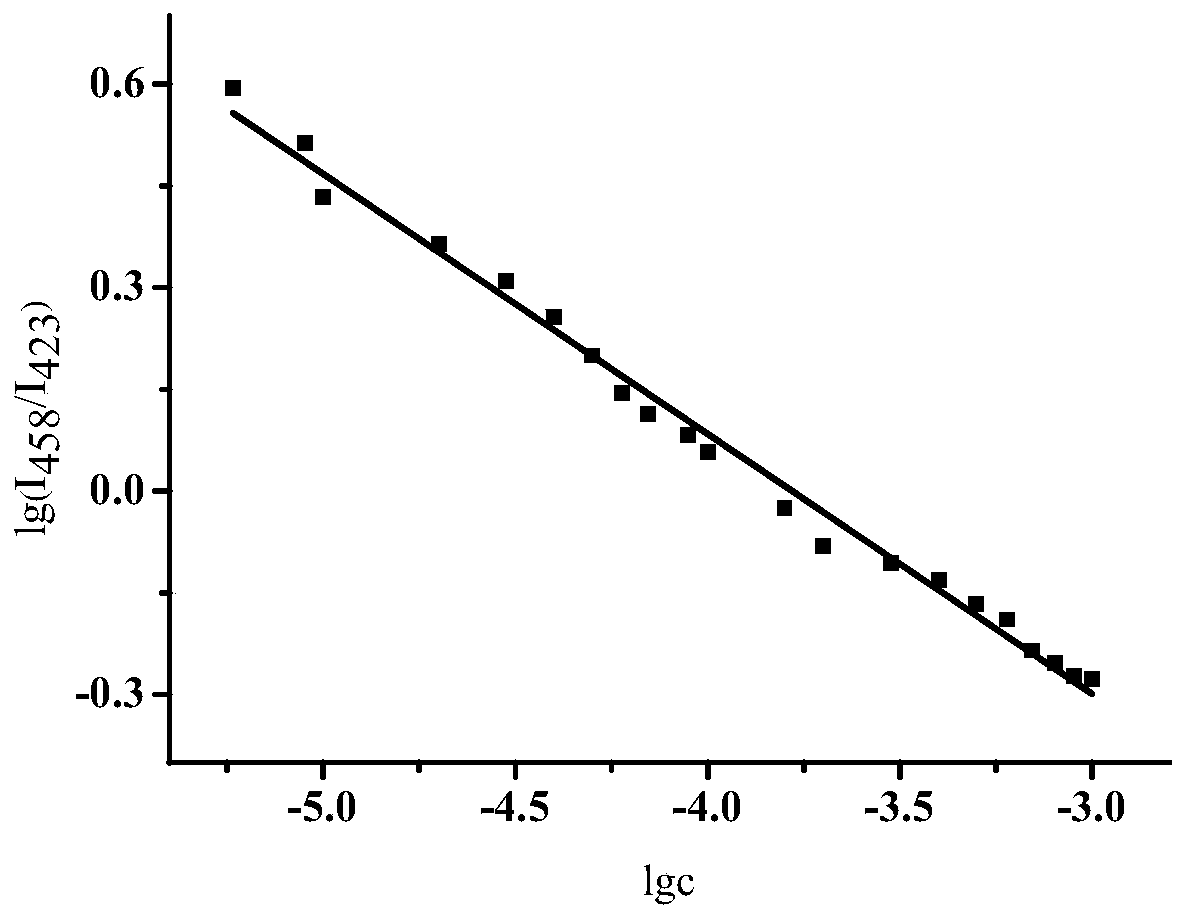A ratio fluorescent probe compound for detecting zinc ions in aqueous solution and its detection method
A ratiometric fluorescent probe and compound technology, applied in the field of fluorescent probes, can solve problems such as poor water solubility, and achieve the effects of improved sensitivity, elimination of systematic errors, and strong interference ability.
- Summary
- Abstract
- Description
- Claims
- Application Information
AI Technical Summary
Problems solved by technology
Method used
Image
Examples
Embodiment 1
[0025] To 3mL of the probe compound N-(4-2’-benzoxazole-3-hydroxyphenyl) carbamoyl picoline chloride salt solution (concentration of 3×10 -5 mol / L) were added 30μL of different metal ion aqueous solutions (concentration of 9×10 -2 mol / L), after fully mixing, measure the fluorescence absorption spectrum of each solution at the excitation wavelength of 328nm (such as figure 1 ). The results show that the probe compound + , K + , Mg 2+ , Ca 2+ , Ba 2+ , Cd 2+ , Pb 2+ , Mn 2+ Response is very weak, Co 2+ , Ni 2+ , Fe 2+ Can slightly quench the fluorescence emission of the probe compound, but only Zn 2+ While the fluorescence emission peak at 458nm is quenched, a new peak appears at 423nm, showing the characteristics of ratiometric fluorescence. Therefore, the probe compound has the ability to detect Zn 2+ Basic conditions for ratio fluorescent probes.
Embodiment 2
[0027] The preparation concentration is 1×10 -1 , 1×10 -2 , 1×10 -3 mol / L of Zn 2+ Aqueous solution. First, add 3 mL of the probe compound N-(4-2’-benzoxazole-3-hydroxyphenyl) carbamoyl picoline chloride aqueous solution (3×10 - 5 mol / L), the concentration is 1×10 dropwise successively -3 mol / L of Zn 2+ 24, 3, 3μL of aqueous solution, mix well and scan the spectrum under excitation of 328nm excitation light; then add 3mL probe compound aqueous solution (3×10 -5 mol / L), the concentration is 1×10 dropwise successively -2 mol / L of Zn 2+ 3μL of the aqueous solution, mix well and scan the spectrum under the excitation of 328nm excitation light, and add 10 drops in total; finally, add 3mL of the probe compound's aqueous solution (3×10 -5 mol / L), the concentration is 1×10 dropwise successively -1 mol / L of Zn 2+ 3μL of aqueous solution, mix well and scan the spectrum under excitation of 328nm excitation light, and add 10 drops in total (e.g. figure 2 ). With Zn 2+ As the concentration i...
Embodiment 3
[0029] This example investigates the probe compound's effect on Zn 2+ Selectivity of identification. To 3mL of the probe compound's aqueous solution (concentration of 3×10 -5 mol / L) is added at a concentration of 9×10 -2 mol / L of Zn 2+ 30μL of aqueous solution, and then add 30μL of Na + , K + , Mg 2+ , Ca 2+ , Ba 2+ , Mn 2+ , Fe 2+ , Co 2+ , Ni 2+ , Cd 2+ Or Pb 2+ Metal ion aqueous solution (concentration of 9×10 -2 mol / L), after fully mixing, sweep the spectrum under the excitation of 328nm excitation light, different metal ions and Zn 2+ The effect of coexistence on the fluorescence intensity of the mixed system is as Figure 4 . The experimental results show that the probe compound is used as a fluorescent probe for the determination of Zn in aqueous solution 2+ The sensitivity is high, the ions in other water interfere little with the measurement results, and the results are stable and reliable.
PUM
 Login to View More
Login to View More Abstract
Description
Claims
Application Information
 Login to View More
Login to View More - R&D
- Intellectual Property
- Life Sciences
- Materials
- Tech Scout
- Unparalleled Data Quality
- Higher Quality Content
- 60% Fewer Hallucinations
Browse by: Latest US Patents, China's latest patents, Technical Efficacy Thesaurus, Application Domain, Technology Topic, Popular Technical Reports.
© 2025 PatSnap. All rights reserved.Legal|Privacy policy|Modern Slavery Act Transparency Statement|Sitemap|About US| Contact US: help@patsnap.com



